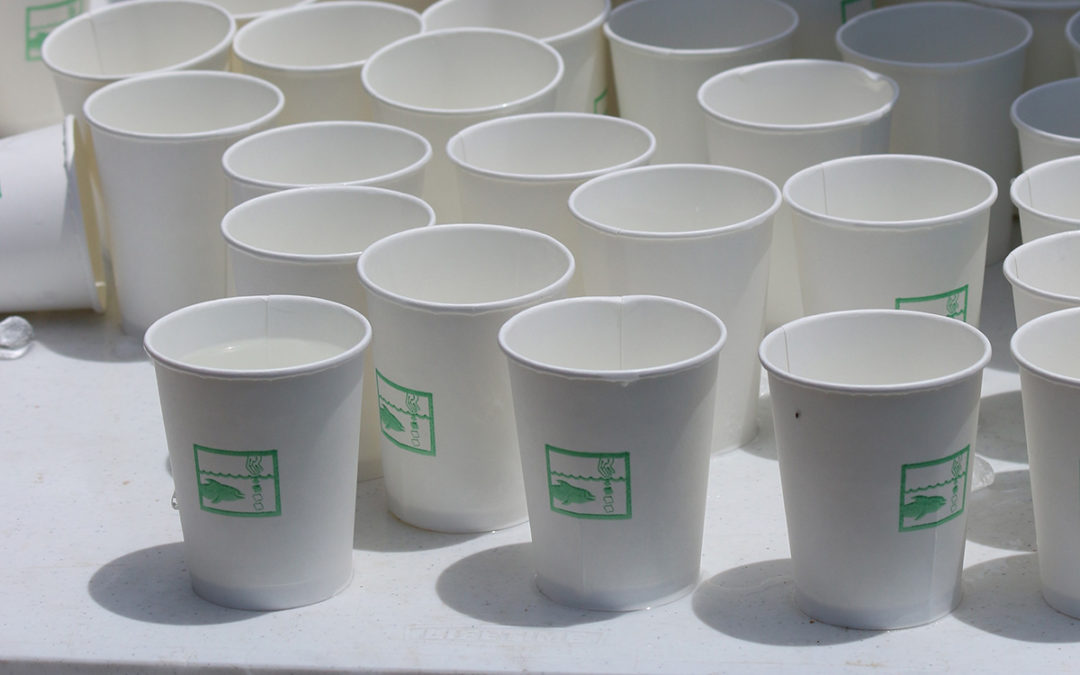Summer is in full swing and there are more hot days to come. Unless you can get your workout done first thing in the morning when the temperatures are cooler, chances are that you will be sweating during your training sessions. One important thing to remember is to stay hydrated.
There are two types of dehydration states:
- You begin your workout already dehydrated (hypohydration) and
- Dehydration that occurs as you sweat during exercise (exercised-induced dehydration).
The key is to be aware of your fluid intake both during and between workouts. According to the journal article “Effects of Dehydration on Exercise Performance,” even a modest level of exercise-induced dehydration can affect your performance by raising your heart rate, core temperature and perceived effort level. It may even increase your need for carbohydrates to fuel.
Staying Hydrated During Training
It should be easy to stay hydrated while swimming because you can keep a water bottle on the pool deck. However, it’s easy to forget to hydrate during swimming, because our thirst isn’t as noticeable in the water. We recommend putting a drink mix or electrolyte mix into your water for flavor and an extra incentive to drink between sets.
If you are riding on a hot summer day, it isn’t hard to drink a lot early in the ride and empty your bottles. For long rides we recommend you either stick an extra bottle in your jersey pocket, use a hydration pack (like a CamelBak) or plan a ride with water stops. Gas stations are a great place to refill on water and even buy a cold soda if you are feeling sluggish.
There is nothing worse than being several miles into a run and experiencing dehydration. It can also become very serious. For instance, we had to help a man throwing up from dehydration on the side of the trail and call for medical help. To avoid such an experience, wear a hydration pack or fuel belt; do shorter loops and leave water out for yourself for each loop; drive to the turn-around stop of your run and drop water; or carry a bottle 1-2 miles into your run and stash it for the way home.
Bike and run training are also excellent opportunities to try taking salt so you can see how your body reacts. We suggest taking sodium citrate, which can be found in products like SaltStick Caps Plus. You can take it prior to exercise and during but you’ll want to test how your digestive tract will react prior to racing with it. For more information about electrolytes, see Krista Schultz’s article: “Tips on How to Replace Your Electrolytes During Triathlon Training and Racing” that appeared in Triathlete Magazine.
Staying Hydrated While Racing
You’d guess that staying hydrated during a race should be simpler because of aid stations, but the medical staff on a hot day are often busy treating athletes for dehydration. We encourage you to start drinking a water bottle with electrolytes in the morning while setting up before the race start.
Take water from every aid station, especially on the bike because the bike aid stations are more spread out. If your bottles are still full, grab a cold water bottle and drink a few gulps before tossing in the last trash bin. As a suggestion, mark your own bottles with evenly spaced lines to designated how much you should drink every 20-30 minutes.
These are a sampling of tips and tricks that we recommend for staying hydrated and at the top of your game, but there are plenty of other ways to keep up your fluid intake. If you have a great habit we haven’t mentioned above, feel free to share it with us!
For additional suggestions on training and racing in the heat, please see Coach David Glover’s article: “Three Tips for Triathlon and Run Training in the Heat.”


